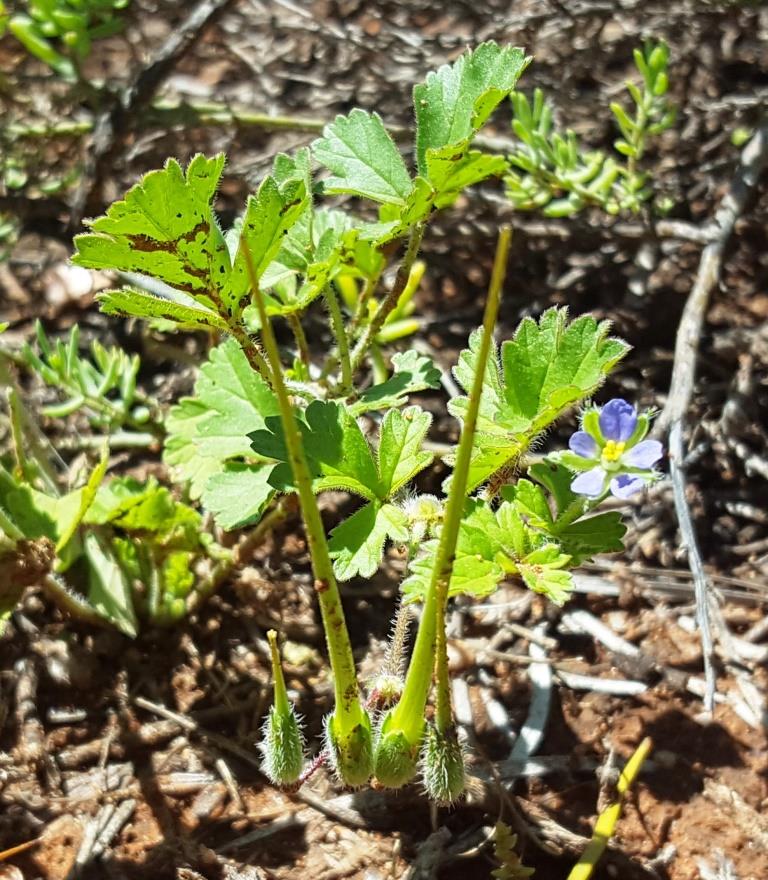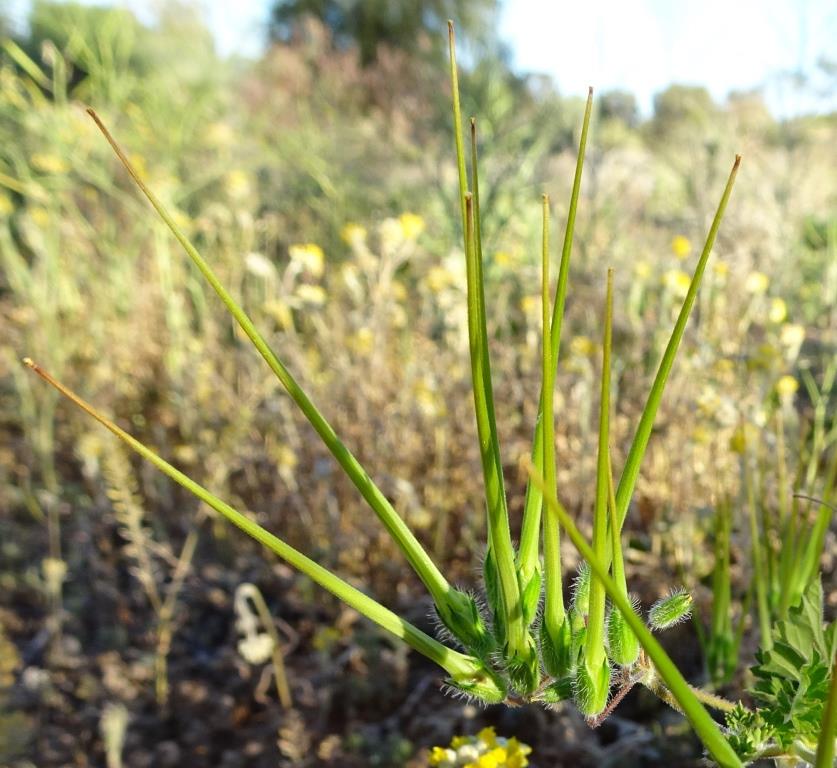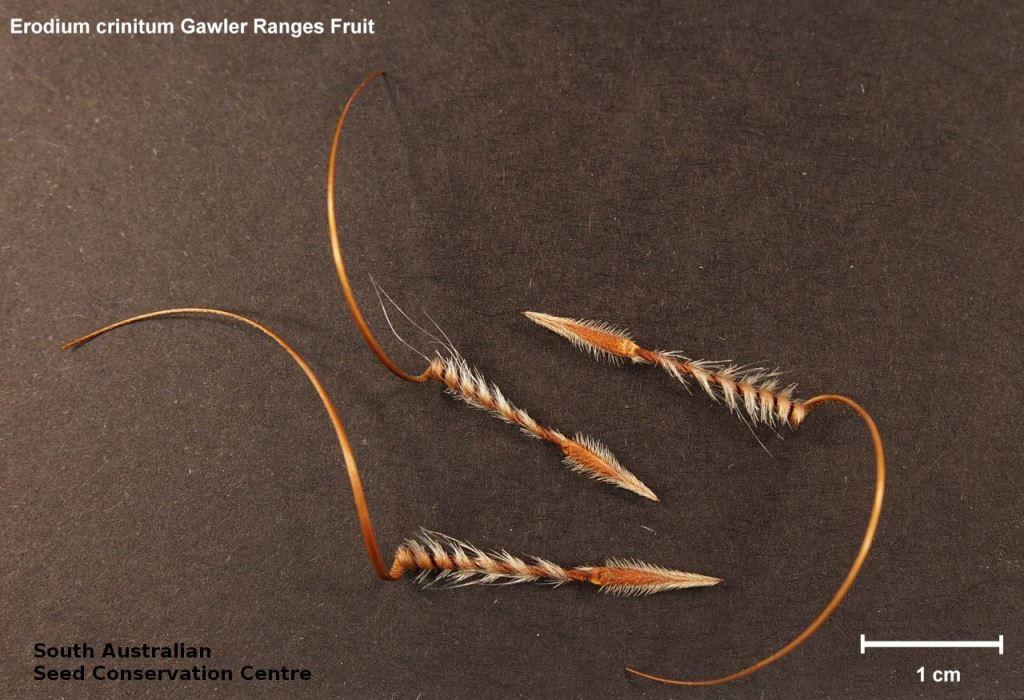
Heron’s Bill, Crowfoot, Cranebill, Storkbill. Call them what you like! I’m talking about the fun Erodium genus. Herbs in the genus Erodium (Greek: erodiós or ερωδιός, meaning Heron), have fruit that resemble long bird beaks (hence the name). They are closely related to the Geranium (Greek: geranós or γερανός, meaning Crane) genus and the Pelargonium (Greek: pelargós or πελαργός, meaning Stork) genus.
There are roughly 60 species of Erodium, though only a few can be found locally. Erodium angustilobum, E. aureum, E. carolinianum, E. crinitum and E. cygnorum are native to the NT and can be found around Alice Springs, whereas E. botrys and E. cicutarium are both introduced species. The introduced species can be distinguished from other native Erodium species in central Australia by either a lack of glandular hairs on the basal stems (E. botrys) or compound leaves (E. cicutarium). You can read more about the individual species by clicking the links above, which will redirect you to the detailed pages at Flora NT. The plants are supposedly edible and have a flavour similar to parsley when young.
‘But why are they so fun?’ I hear you ask! It all begins with the birds and the bees (as the old story goes). Then, once the flowers are pollinated, the fruit (schizocarp) will be produced containing five sections (carpels). Each of the carpels contains a spiral seed, which can be up to 6 cm long, with a swollen arrow-like mericarp at one end containing the embryo and a slender spiralling beak (style or awn). This beak is why the Erodium have my attention.

Firstly, the curling of the beak enables the seed to use ballistic dispersal to be launched half a meter away from the parent plant on maturity to facilitate dispersal. Once the seed has landed the beak can uncoil and coil again, which generates thrust to burrow the seed into the soil for successful germination.
The beak is able to coil and uncoil because it is hygroscopically active, which means that it absorbs moisture from the air (responding to ambient humidity). This moisture causes the beak to elongate or unwind and the Erodium spins in response, turning clockwise when wet and counter-clockwise when recoiling as it dries. The beak is also able to catch strong wind gusts which can help to spin it for self-burial of the mericarp. You can watch a great video of the coiling and uncoiling on YouTube. Now that, my Land for Wildlife friends, is fun – right?!

Read more about the mechanics of the hygroscopic seeds of Erodium in a research paper by Evangelista, D., Hotton, S., Dumais, J. (2011). The mechanics of explosive dispersal and self-burial in the seeds of the filaree, Erodium cicutarium (Geraniaceae). The Journal of Experimental Biology 214, 521-529. DOI: 10.1242/jeb.050567
Categories:
Gardening, Physiology, Plants, Weeds